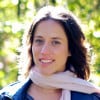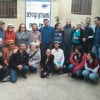Wisdom from Rabbi Brent Chaim Spodek Videography by Deana Morenoff and Michael Arginsky Rabbi Brent Chaim Spodek is the rabbi at Beacon Hebrew Alliance. Before that, he served as the Rabbi in Residence at American Jewish World Service and the Marshall T. Meyer Fellow at Congregation B’nai Jeshurun in New York. He has been recognized by the Jewish Forward as one of the most inspiring rabbis in America, and by Newsweek/The Daily Beast as “a rabbi to watch.” Brent holds rabbinic ordination and a masters in philosophy from the Jewish Theological Seminary, where he was the first recipient of the Neubauer Fellowship. Prior to entering the rabbinate, he attended Wesleyan University and worked as a daily journalist in Durham, NC. He lives in Beacon with his wife Alison, a professor of environmental chemistry at Vassar College and their two children, Noa and Abraham. A selection of Brent’s teachings are available here. The 7-week period between the holidays of Pesach and Shavuot is called the Omer. For each of these 7 weeks, we will be making available one offering per week from 7 leaders of our upcoming Shavuot Retreat. Join us Memorial Day weekend for the Shavuot retreat to go deeper […]









